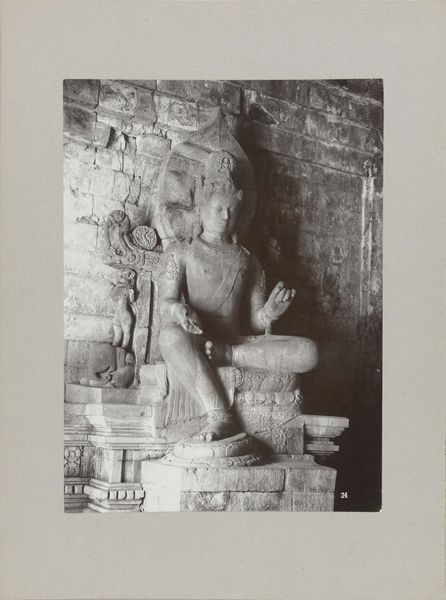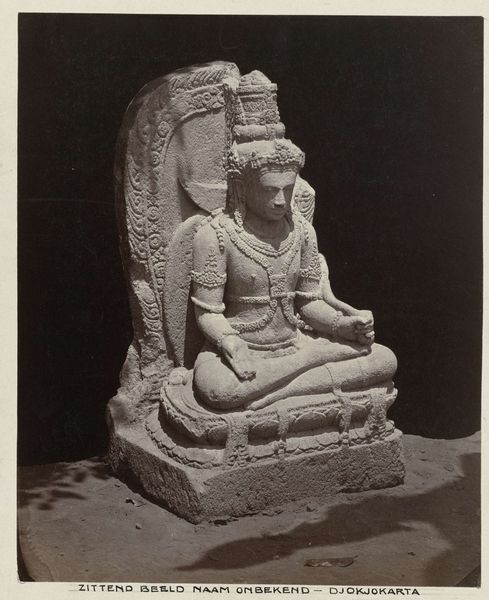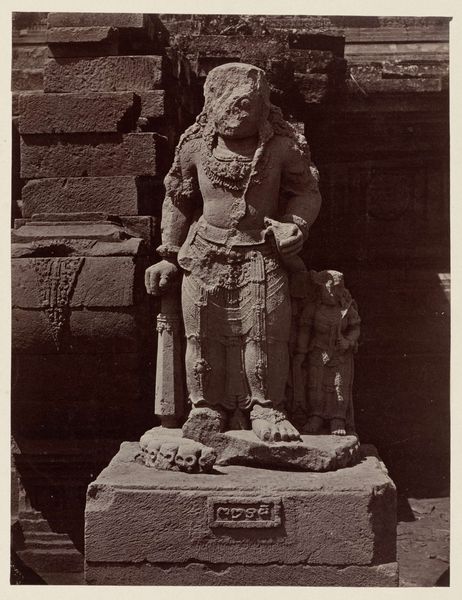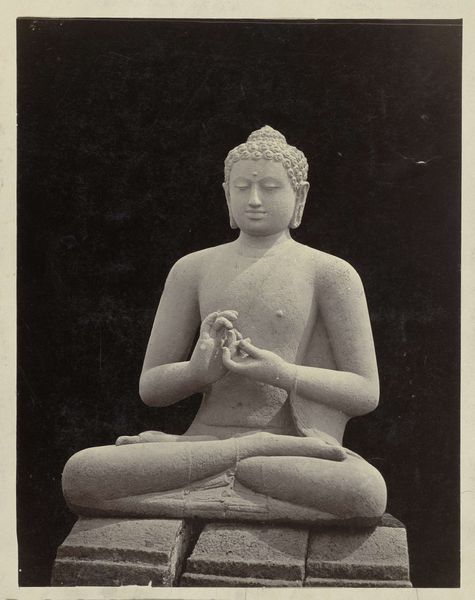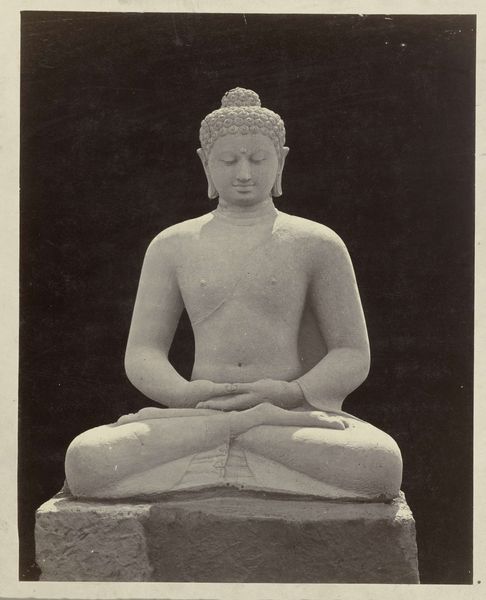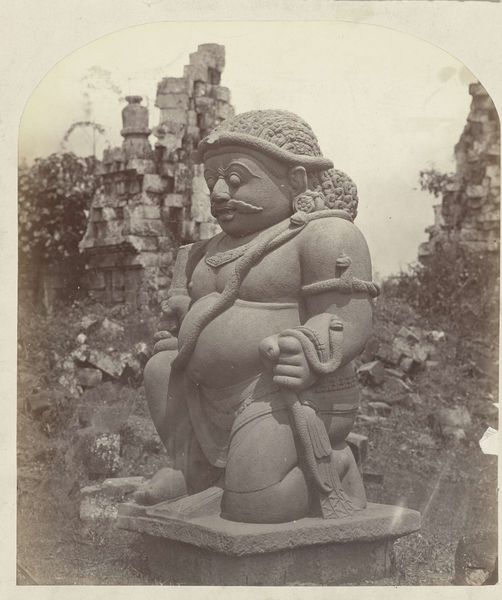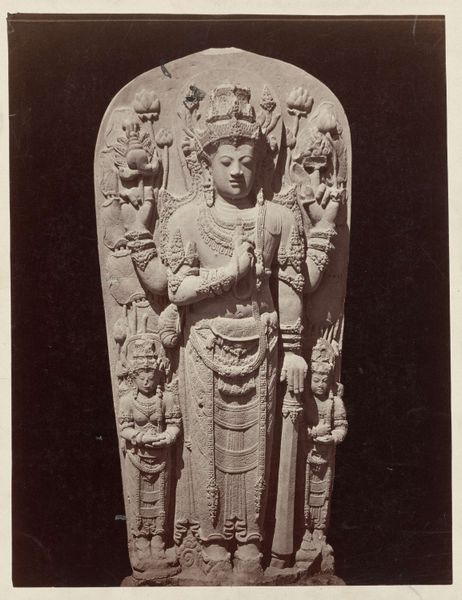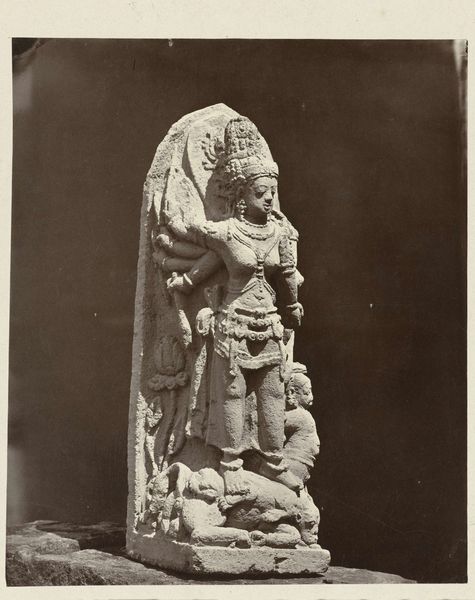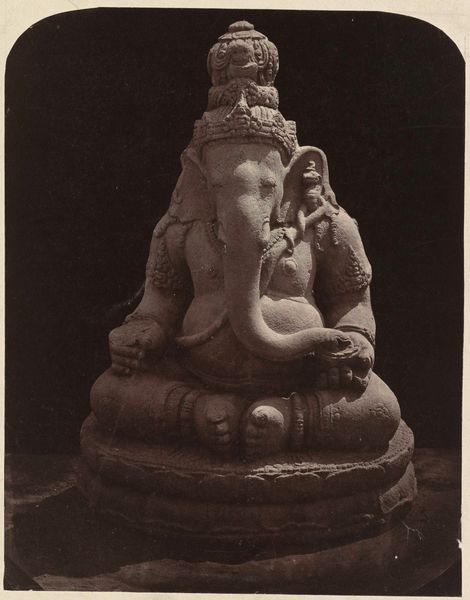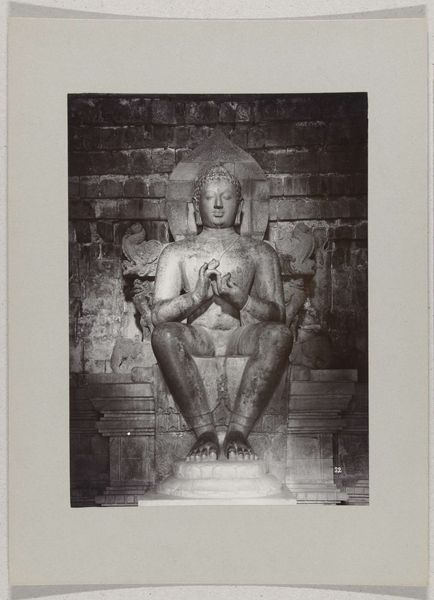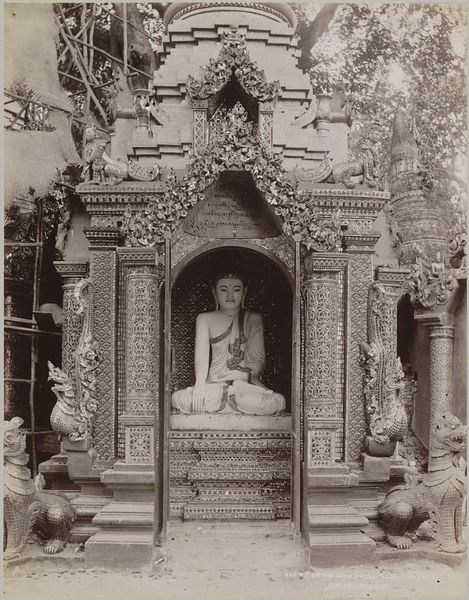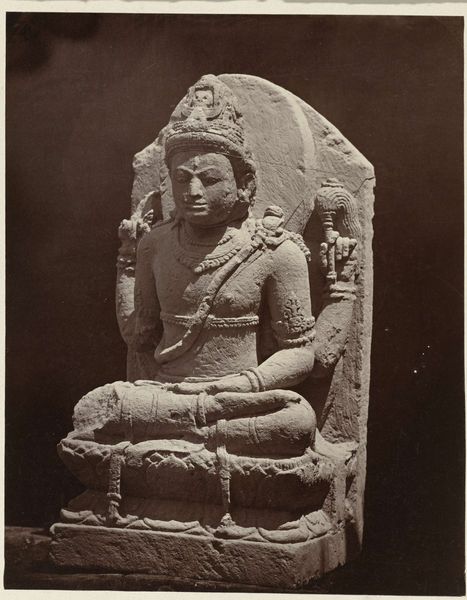
photography, sculpture, site-specific
#
portrait
#
statue
#
asian-art
#
photography
#
ancient-mediterranean
#
sculpture
#
site-specific
Dimensions: height 220 mm, width 161 mm, height 238 mm, width 184 mm
Copyright: Rijks Museum: Open Domain
Editor: This is a photograph titled "Boeddhabeeld in de Candi Mendut" taken between 1890 and 1900 by Kassian Céphas, currently held in the Rijksmuseum. It depicts a stone Buddha statue within a brick structure. I am immediately struck by how the photographer captured the texture of both the sculpture and the surrounding stonework. What are your thoughts on the piece? Curator: Well, focusing on the material aspect, the photo showcases a fascinating intersection of stone, labor, and representation. Consider the labor involved in quarrying, carving, and transporting the stone to create the statue itself. This is further documented and distributed by the work in producing this photographic representation. What impact does the reproducibility and access impact ideas about art? Editor: That's an interesting point. I hadn't thought about the stone itself as a product of labor. The photograph democratizes access, but might also remove a level of ritual or something...sacred? Curator: Precisely! The act of photographing it also turns it into a commodity, a captured image circulated. How does this mass distribution alter its meaning and the intended purpose? Editor: I see your point! The photo detaches the sculpture from its ritual context, making it accessible to a wider audience but simultaneously stripping it of its original significance. Curator: The interplay between material existence, photographic reproduction, and its dissemination for a growing population impacts the nature of experiencing a Buddhist practice in 19th-century Java. What are your overall reflections after this exercise? Editor: Considering the sculpture as a product of labor and its image as a commodity has definitely given me a new perspective on its cultural and historical value, I had never thought about the consumption element here. Thanks!
Comments
No comments
Be the first to comment and join the conversation on the ultimate creative platform.
